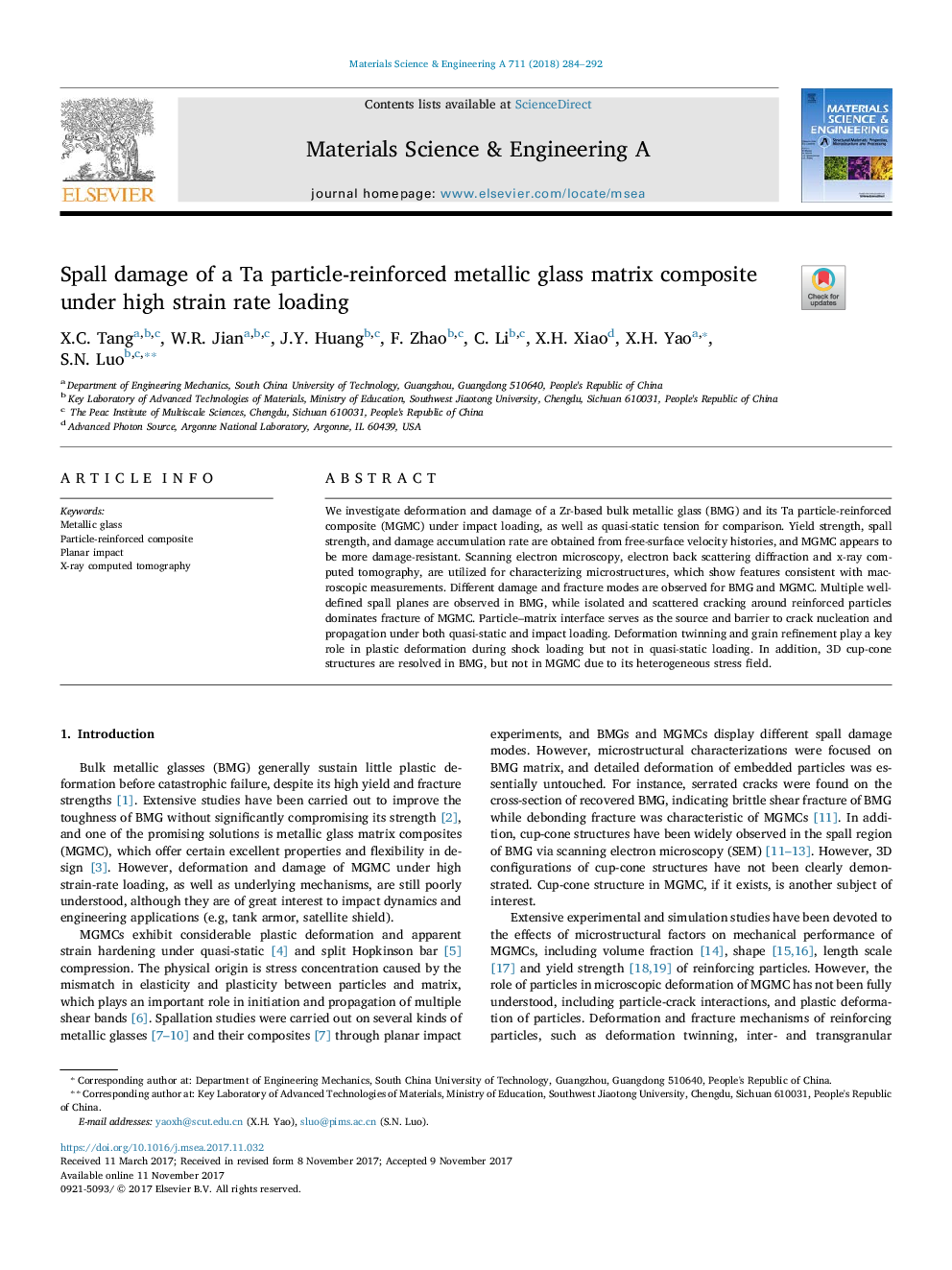| Article ID | Journal | Published Year | Pages | File Type |
|---|---|---|---|---|
| 7974241 | Materials Science and Engineering: A | 2018 | 9 Pages |
Abstract
We investigate deformation and damage of a Zr-based bulk metallic glass (BMG) and its Ta particle-reinforced composite (MGMC) under impact loading, as well as quasi-static tension for comparison. Yield strength, spall strength, and damage accumulation rate are obtained from free-surface velocity histories, and MGMC appears to be more damage-resistant. Scanning electron microscopy, electron back scattering diffraction and x-ray computed tomography, are utilized for characterizing microstructures, which show features consistent with macroscopic measurements. Different damage and fracture modes are observed for BMG and MGMC. Multiple well-defined spall planes are observed in BMG, while isolated and scattered cracking around reinforced particles dominates fracture of MGMC. Particle-matrix interface serves as the source and barrier to crack nucleation and propagation under both quasi-static and impact loading. Deformation twinning and grain refinement play a key role in plastic deformation during shock loading but not in quasi-static loading. In addition, 3D cup-cone structures are resolved in BMG, but not in MGMC due to its heterogeneous stress field.
Related Topics
Physical Sciences and Engineering
Materials Science
Materials Science (General)
Authors
X.C. Tang, W.R. Jian, J.Y. Huang, F. Zhao, C. Li, X.H. Xiao, X.H. Yao, S.N. Luo,
